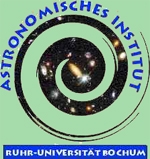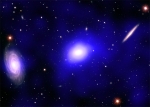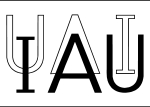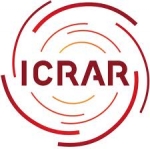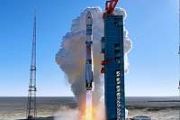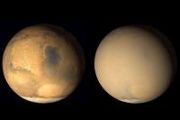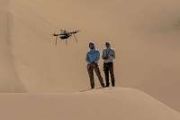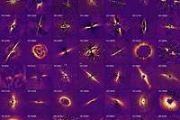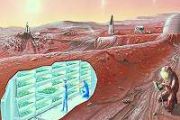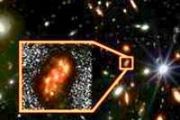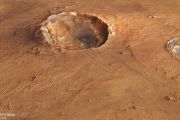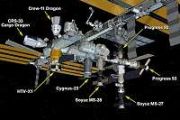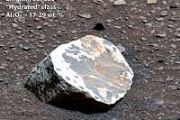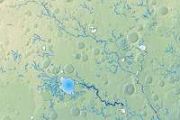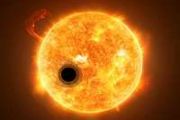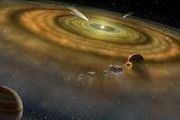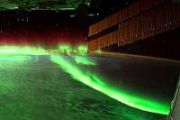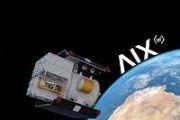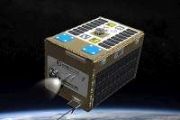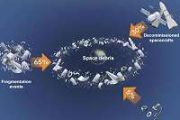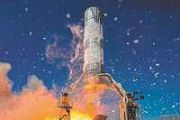Displaying items by tag: astronomy
Wide-field Infrared Survey Explorer (WISE)
Wide-field Infrared Survey Explorer (WISE) is a NASA infrared-wavelength astronomical space telescope launched on December 14, 2009, and decommissioned/hibernated on February 17, 2011 when its transmitter was turned off.
WISE was an Earth-orbiting satellite with a 40 cm (16 in) diameter infrared telescope, which performed an all-sky astronomical survey with images in 3.4, 4.6, 12 and 22 μm wavelength range bands, over 10 months. The initial mission length was limited by its hydrogen coolant, but a secondary post-cryogenic mission continued for four more months.
Astronomisches Institut der Ruhr-Universität Bochum
The AIRUB (Astronomisches Institut der Ruhr-Universität Bochum) is the astronomy department of the Ruhr-Universität Bochum university, one of the biggest university of Germany.
CLoGS (Complete Local-Volume Groups Sample)
The CLoGS project aims to be the first statistically complete survey of galaxy groups observed in the X-ray, optical and radio wavebands. Since >50% of galaxies in the local volume reside in groups, they are a key environment for studies of galaxy evolution. As the locus of much of the mass in the nearby Universe, and the environment in which the hot, X-ray emitting intergalactic medium first becomes important, groups are also fundamental to our understanding of AGN feedback and structure formation. Our main science goals include:
Determining the basic physical properties of a representative sample of groups for the first time.
Examining the temperature and density structure of the gaseous halos of groups, the ability of groups to retain gas, and the fraction of systems with central cooling cores.
Characterisation of the AGN population in groups, and examination of their impact on the intra-group gas and member galaxies.
Study of the galaxy population of groups, and the relationships between galaxies, their groups, star formation and nuclear activity.
Principal Investigator (PI): Dr Ewan O' Sullivan
Collaboration Members:
Prof. Trevor Ponman University of Birmingham
Dr. Somak Raychaudhury University of Birmingham
Dr. Alastair Sanderson University of Birmingham
Konstantinos Kolokythas University of Birmingham
Dr. Jan Vrtilek Harvard-Smithsonian Center for Astrophysics
Dr. Laurence P. David Harvard-Smithsonian Center for Astrophysics
Dr. William Forman Harvard-Smithsonian Center for Astrophysics
Dr. Christine Jones Harvard-Smithsonian Center for Astrophysics
Dr. Chris Haines University of Arizona
Dr. Simona Giacintucci University of Maryland
Dr. Nazirah Jetha University of Alabama, Huntsville
Dr. Myriam Gitti INAF - Astronomical Observatory of Bologna/
Harvard-Smithsonian Center for Astrophysics
Prof. Stephen S. Murray Johns-Hopkins University
Dr. Nimisha G. Kantharia National Centre for Radio Astrophysics
University of Birmingham, Astrophysics & Space Research Group
The Astrophysics & Space Research Group at the University of Birmingham:
The group's research interests span a wide swathe of astronomy and fundamental physics, including the study of galaxies and larger cosmological structures, of black holes and neutron stars, using both electromagnetic and gravitational radiation, of stars and the planets which appear to orbit many of them, and of our own sun and its surrounding heliosphere. We also study gravity itself, and other ultra-weak forces, using sensitive experiments in the laboratory and in space.
SOFIA observatory
The Stratospheric Observatory for Infrared Astronomy (SOFIA) is a joint project of NASA and the German Aerospace Center ( DLR) to construct and maintain an airborne observatory. NASA awarded the contract for the development of the aircraft, operation of the observatory and management of the American part of the project to the Universities Space Research Association (USRA) in 1996.
The DSI (Deutsches SOFIA Institut) manages the German parts of the project which are primarily science and telescope related. SOFIA's telescope saw first light on May 26, 2010. SOFIA is the successor to the Kuiper Airborne Observatory.
International Astronomical Union (IAU)
The International Astronomical Union (IAU) was founded in 1919. Its mission is to promote and safeguard the science of astronomy in all its aspects through international cooperation.
Its individual members - structured in Divisions, Commissions, Working groups and Program Groups - are professional astronomers from all over the world, at the Ph.D. level and beyond, and active in professional research and education in astronomy. In addition, the IAU collaborates with various organizations all over the world.
The key activity of the IAU is the organization of scientific meetings. Every year the IAU sponsors nine international IAU Symposia. The IAU Symposium Proceedings series is the flagship of the IAU publications. Every three years the IAU holds a General Assembly, which offers six IAU Symposia, some 25 Joint Discussions and Special Sessions, and individual business and scientific meetings of Divisions, Commissions, and Working Groups. The proceedings of Joint Discussions and Special Sessions are published in the Highlights of Astronomy series.
WiggleZ
The WiggleZ Dark Energy Survey is a large-scale galaxy redshift survey which was carried out over 276 nights at the Anglo-Australian Telescope between Aug. 2006 and Jan. 2011.
The aim of the project is to analyze the galaxy distribution in order to learn more about the nature of dark energy.
International Centre for Radio Astronomy Research (ICRAR)
The International Centre for Radio Astronomy Research is a collaborative centre based in Perth, Western Australia.
ICRAR has grown steadily since has been created in September 2009.
Harvard–Smithsonian Center for Astrophysics (CfA)
The Harvard–Smithsonian Center for Astrophysics (CfA) is one of the largest and most diverse astrophysical institutions in the world, where scientists carry out a broad program of research in astronomy, astrophysics, earth and space sciences, and science education. The center's mission is to advance knowledge and understanding of the universe through research and education in astronomy and astrophysics.
The center was founded in 1973 as a joint venture between the Smithsonian Institution and Harvard University. It consists of the Harvard College Observatory and the Smithsonian Astrophysical Observatory. The center's main facility is located at Cambridge, Massachusetts, USA. Beyond this location there are also additional satellite facilities elsewhere around the globe.
Sloan Digital Sky Survey (SDSS)
The Sloan Digital Sky Survey or SDSS is a major multi-filter imaging and spectroscopic redshift survey using a dedicated 2.5-m wide-angle optical telescope at Apache Point Observatory in New Mexico, United States. The project was named after the Alfred P. Sloan Foundation.
Data collection began in 2000, and the final imaging data release covers over 35% of the sky, with photometric observations of around 500 million objects and spectra for more than 1 million objects. The main galaxy sample has a median redshift of z = 0.1; there are redshifts for luminous red galaxies as far as z = 0.7, and for quasars as far as z = 5; and the imaging survey has been involved in the detection of quasars beyond a redshiftz = 6.
Data release 8 (DR8), released in January 2011, includes all photometric observations that will be taken with the SDSS imaging camera, covering 14,555 square degrees on the sky (just over 35% of the full sky). Data release 9 (DR9), released to the public on 31 July 2012, includes all data from previous releases, plus the first results from the Baryon Oscillation Spectroscopic Survey (BOSS) spectrograph, including over 800,000 new spectra. Over 500,000 of the new spectra are measurements of radiation produced 7 billion years ago (roughly half the age of the universe).
Funding for the SDSS and SDSS-II was provided by the Alfred P. Sloan Foundation, the Participating Institutions, the National Science Foundation, the U.S. Department of Energy, the National Aeronautics and Space Administration, the Japanese Monbukagakusho, the Max Planck Society, and the Higher Education Funding Council for England. The SDSS was managed by the Astrophysical Research Consortium for the Participating Institutions.


